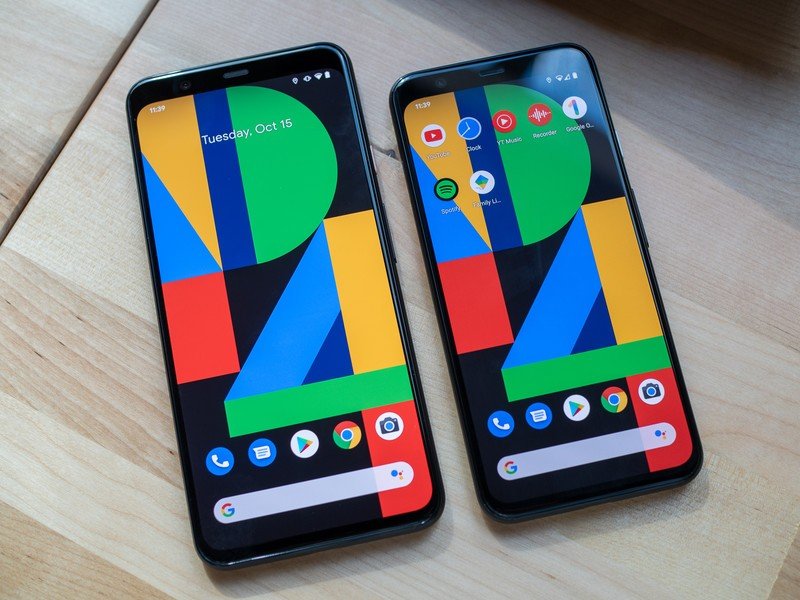Why does a high refresh rate display use more battery?

Best answer: The display is already the biggest power consumer of your phone, partially because it makes plenty of other parts work hard to drive it. And when you drive the display even harder the rest of the parts can use more battery than normal.
- The best high refresh screen: Samsung Galaxy S20 ($1,000 at Samsung)
- An incredible value: OnePlus 7 Pro ($499 at OnePlus)
- Straight outta Google: Google Pixel 4 (From $700 at Amazon)
Your phone is more than the sum of its parts
High refresh rate displays are one of the best things to ever happen to a smartphone. But like everything great, there is a trade-off and in this case, it's battery life.
There is no denying that a higher screen refresh — whether it be 90 Hz like the OnePlus 7 Pro and Pixel 4 or the 120Hz from the Galaxy S20 — makes your phone feel more responsive and is easier on your eyes. There is also no denying that those higher refresh rates also use more battery power, though just how much is still up for debate.
Here's how Android makers can balance 120Hz screens and battery life
Both the pros and cons of a high refresh display are because of the same thing — the display refreshing faster means other parts of your phone have to work faster. And while it's easy to think turning pixels on and off more times each second is the reason, that's not really the issue.
It's not just showing the pixels twice as fast.
The circuitry that drives a smartphone display uses what's called Low Voltage Differential Signaling (LVDS). There are several different ways to turn the actual signal coming from a phone's GPU into an LVDS signal, but in the end, it means that the same amount of power is going through the display whether the individual pixels are on or off. It's complex but the gist is that the phase of the signals is compared to decide what to turn on and for how long.
This is why the display still uses a lot of power anytime it's on, even if you aren't really using your phone and it's just sitting there burning in the screen. But the components in the display are only a small part of the overall picture.
Be an expert in 5 minutes
Get the latest news from Android Central, your trusted companion in the world of Android
What most of us never think about is that the CPU and GPU of a phone will also use more power with a high-refresh display. That's why a phone looks and feels more responsive, causes less eyestrain, and uses more power.

On the phone, the CPU is in charge of almost everything. Some of that everything is keeping track of what is drawn on the screen and where it's drawn. It's also keeping track of where you touch the screen and for how long. When you touch the screen on a standard 60Hz phone it takes about 16 milliseconds for the CPU to recognize it was touched and then respond. On a 120Hz phone, it takes about 8 seconds because the screen refreshes twice as fast.
Faster refresh means the CPU has to work harder to keep track of what's on the screen.
That means the CPU thread(s) that handle touch input is also working twice as fast and your CPU will need to run faster to keep up. Even a single thread on a single core on a processor will use more power if it is working twice as fast or twice as often. And that's just the part handling the touches; the software that keeps track of what is on the screen, how it moves, how long it's in one place, etc. also needs to run faster or more often. It adds up enough to cut into the battery life.
Next comes the GPU, which is likely the biggest offender when it comes to battery life issues on high-refresh screens. The GPU also works twice as fast on a 120Hz screen as it does a 60Hz screen and a GPU runs hot and kills your battery quickly even at "normal" refresh rates. If you've ever played a 3D game on your phone you know that first hand.
How to change the Galaxy S20 refresh rate: 120Hz or 60Hz
All of this applies no matter what level of brightness you have the display set to or what resolution you're running the phone at. Both of those have a much worse effect on the battery than a higher refresh rate does and that's why companies like Samsung limit the screen refresh to 60Hz by default when you're running the phone at an ultra-high resolution or why the Pixel 4 refresh rate is tied to brightness by default. Running everything full-blast would deplete the battery far too quickly. We also know that's true because plenty of us do it anyway and don't care. Thanks, fast charging.

When all is said and done, these things that each drain a small bit of extra power at higher refresh rates add up. And together, they can make a dramatic impact on how long your battery will last when you're running the display at a higher refresh rate. It's up to you to try it and see if it's worth it. I think it is, but plenty of people don't agree.

Jerry is an amateur woodworker and struggling shade tree mechanic. There's nothing he can't take apart, but many things he can't reassemble. You'll find him writing and speaking his loud opinion on Android Central and occasionally on Threads.
